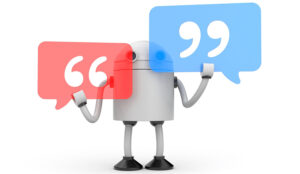Chat is fast becoming a preferred customer service channel for both businesses and customers.
For customers it’s incredibly convenient and provides a speedy response compared to email or social media. For businesses it enables them to resolve queries fast via a relatively low cost channel.
However, no two businesses are the same and therefore strategies for using chat will differ. Knowing what to focus on to make chat work for your business is essential.
Here are 10 questions you need to be asking before implementing a chat customer service channel:
1. Website Only or Social Media Channels too?
It makes sense to have chat on your website, being available to answer customer queries or guide them through a purchasing process.
The question arises, however, if the same resources should be used to manage social media channels as well.
While the skill set required for both is very similar, webchat is responsive, whereas social media requires proactive monitoring so that a good response rate can be maintained.
Keeping on top of multiple posts across multiple channels can increase the workload of agents significantly.
Styles of conversations will also differ so agents will need to be trained accordingly.
2. Sales or Service?
What is the purpose of having webchat? Is it to help guide customers through transactions and make sales or is it there purely for general queries and customer service.
The answer to this question will determine what type of technology and resources you need to invest in.
Given the versatility of webchat and its ability to drive sales through service you may want to consider enabling it for both.
3. Proactive or Reactive?
Are you going to invite conversations or wait for customers to initiate queries? A reactive strategy is easier to implement and eliminates the risk of being seen to be badgering the customer.
However, it does require careful monitoring to ensure agents are available when customers want to chat. A proactive approach may require more resources and a more strategic approach.
For example, do you initiate the chat when customers first reach your website or only when they start browsing products or when they navigate to the FAQs page?
Algorithms can be used to create advanced solutions based on customer behaviours; however, these usually come at a cost.
This is determined by how much the business wishes to invest as well as what technical resources are available to provide the necessary support.
4. In-House or Managed Service?
Having webchat in-house will allow existing agents to expand on their skills and enjoy a greater level of diversity in their work.
However, it does add to their workload and in some cases, depending on their expertise, agents may require additional training.
There is the option to outsource to a third party, but this requires a strong relationship and good training if you want be able to offer the same level of seamless customer service.
5. Stand Alone or Fully Integrated?
There are simple add-ins that can be incorporated into most websites. However, even these often require some degree of customisation.
A fully integrated solution may require some more detailed coding but can enhance the service offered to customers through the ability to tap into analytics and historical buying data.
6. Concurrent Chats – More or Fewer?
Webchat allows a single agent to interact with multiple customers simultaneously as opposed to having just a single phone conversation.
From this perspective it can increase the productivity of a contact centre.
However, it does require agents to be astute and able to keep up with multiple conversations without getting confused between them.
Also, with more chats involved it may result in a delay in responses and the level of service could deteriorate so this needs to be carefully balanced.
7. Screen Viewing or Desktop Sharing?
A common application of webchat is to guide customers through a website or online transactions, and there are different ways to implement this.
Some applications allow agents to view the same screen while others allow the agents to take remote control of the user’s desktop.
The solution you choose will depend on the type of products or services offered as well as the level of trust that customers have in your organisation.
8. Text Only or Video?
While most webchat applications are used purely for texting, video calling is a popular way of communicating and is an option for some webchat tools.
While face-to-face interactions will enhance the customer experience it does mean that agents revert to only speaking to one customer at a time.
Another aspect to consider is that with text a transcript can be provided to the client via email.
With video this type of recording and transcription is not always possible, and if it is, can be more expensive.
9. Queuing or No Waiting?
It is difficult to gauge when customers will want to chat so being available online needs to have a strategic approach.
With proactive chat you can simply mark when agents are available online, but for a responsive approach it’s a little more challenging.
You could have a queuing system or have a bot start the chat, but unless extremely simple questions or very intelligent bots, this is usually only effective for a short time and there is generally still a need for humans to hand off the more complex interactions to.
10. Fixed Cost or Benefit Share?
There are many different pricing options ranging from a fixed licensing cost to billing according to performance related KPIs.
The option you choose will need to align with your webchat objectives, technology required and budget available.
Author: Jonty Pearce
Published On: 14th Aug 2017 - Last modified: 15th Aug 2017
Read more about - Guest Blogs





































